Include a Topper!
-
Happy Birthday Banner
$9.00
Add Ons
Your cart is currently empty!
Since 1949 celebrating 75 years. Order online or call us at 1 800 GAMBINO (426-2466)

Just because Carnival season is over doesn’t mean the unique holidays celebrated in and around New Orleans suddenly come to an end. In fact, Saint Joseph’s Day is just around the corner.
The celebration, taking place on March 19 each year, is commemorated around the world. In southeast Louisiana, it is primarily enjoyed by the region’s large Sicilian population. Here, parades take place on the weekends surrounding Saint Joseph’s Day. Meanwhile, on the day itself, churches, family homes, Sicilian-American businesses, grocery stores, and even a bar or two create beautiful, elaborate Saint Joseph’s Day altars covered in delicious food.
We are no stranger to such altars at Gambino’s Bakery. Over the decades we’ve hosted hundreds of volunteer bakers and altar-makers as they create—for one example—thousands of fig rolls for their annual Saint Joseph’s Day altars.

It’s a special tradition for Sicilians in our city, and increasingly, for the city-at-large. So where did the holiday come from and how did it make its way to New Orleans? We’ll explore those questions below.
Pious origins
Saint Joseph’s Day isn’t only honored in Sicily and New Orleans. Throughout Western Christianity, the holiday is also known as the Solemnity of Saint Joseph or the Feast of Saint Joseph. It is the major feast day of Joseph, the legal father of Jesus Christ and husband to the Virgin Mary.
By the 10th century, the calendars of several countries under the Western Christian Church held March 19 as their day to remember this important figure of Christianity. The day was made official in Rome by 1479.
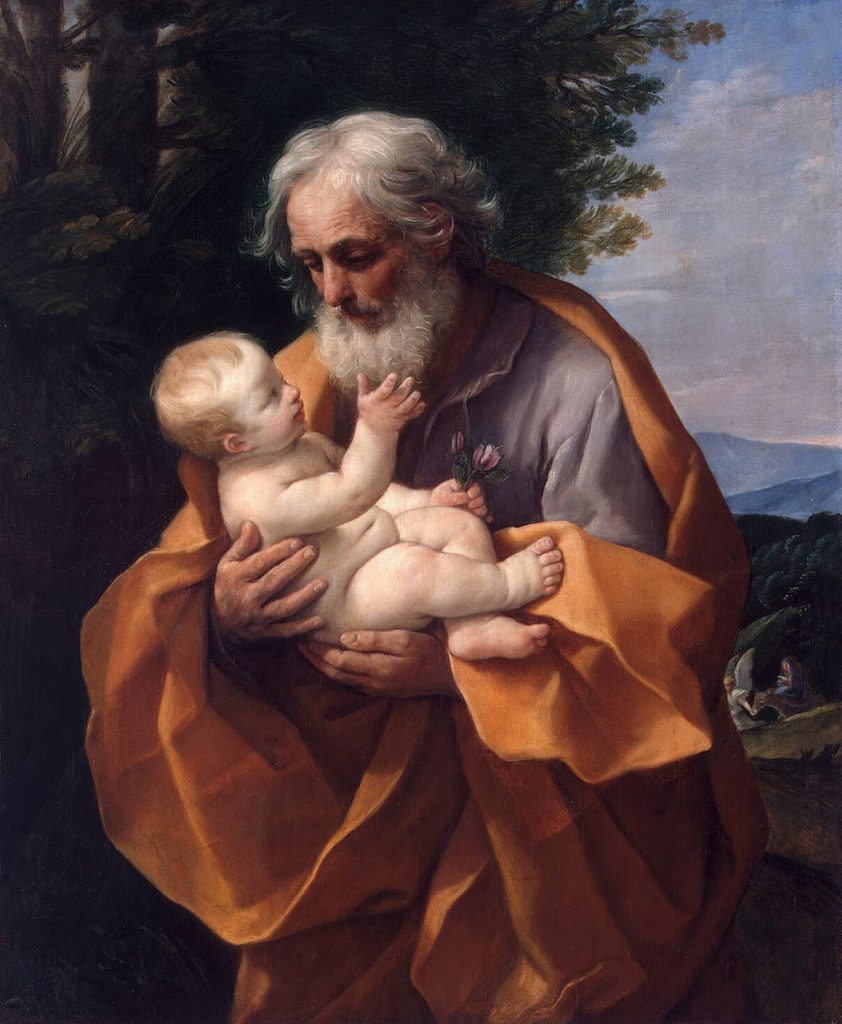
Commemorations around the world
The holiday is celebrated differently in various Christian communities across the globe. In some places, for example, the day is an opportunity to celebrate people or schools and parishes with names such as Joseph and Josephine. In other places, carpenters—Joseph’s profession—are recognized.
In Poland and Canada, Saint Joseph is considered both country’s patron saint, or divine protector. As a result, special masses are held, hymns are sung, and in Poland, the day is considered a major feast.
In contrast, in some Catholic countries such as Italy, Portugal, and Spain, because Joseph was considered a model father, the day is treated like America’s Father’s Day. Spanish children cook their fathers breakfast (no meat, of course, because it’s Lent) and symbols of the holiday include Jesus holding Joseph’s carpentry tools.
Some families in certain rice-producing regions of the Philippines practice the ritual of holding a banquet for a faux Holy Family. An old man, a young lady, and a small boy—sometimes chosen from among the community’s poor—are the guests of honor. They are sat around a table with the host family’s finest silverware and china and are sometimes even spoonfed a variety of courses by more well-to-do dinner attendees. After the dinner, they are given donations as a thank you gift for participating in the ceremony.
That idea of taking care of the poor is important in understanding how Saint Joseph’s Day traditions eventually found their way to New Orleans.
Fighting starvation
Memorable traditions surround Saint Joseph’s Day in Italy. In some parts of the country, bonfires line entire coasts with zeppoles fried on the flame. In other areas, pasta dishes with chickpeas are shared. It’s common in places to see people wearing red-colored clothing or to carry dried fava beans that have been blessed.
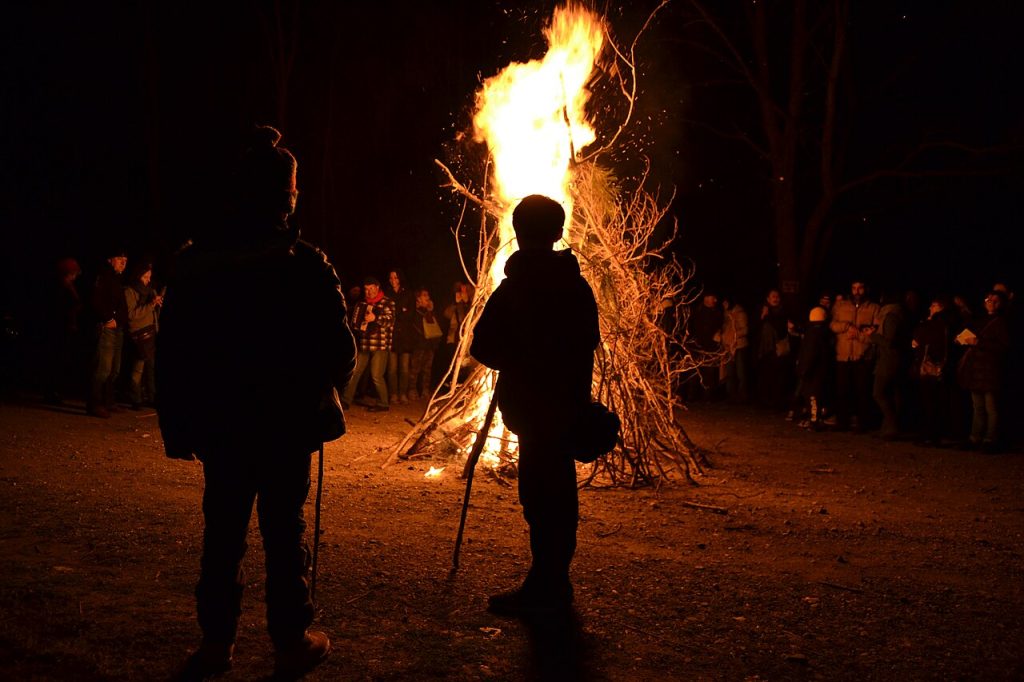
But perhaps no region of Italy has as special of a relationship with the Feast of Saint Joseph as the southern island of Sicily. That relationship began in the Middle Ages when legend says a severe drought hit the island, resulting in terrible famine. The Sicilians prayed to God, promising if He answered their prayers through their beloved Joseph, they would prepare a feast in his honor.
Legend has it that the rain came, with fava beans sprouting and saving the island from starvation. The fava bean has since played a consistent part in Saint Joseph’s Day customs.
So to has the feast the Sicilians promised to God and their patron saint. Each year, on March 19, Sicilians unveil large and prominent Saint Joseph’s Day altars, decorated with figurines, medals, votive candles, flowers, and so much food and drink. Limes, fava beans, elaborate cakes, breads, cookies, zeppole, and a host of Lenten meat-free dishes adorn the table. And, because Joseph was a carpenter, traditional Saint Joseph’s Day foods often have bread crumbs to signify the sawdust produced from his work.
Of course, Sicily isn’t the only place that features Saint Joseph’s Day altars!
Coming to New Orleans
Between 1880 and 1920, at least 300,000 Italians—primarily Sicilians—immigrated to the New Orleans area. They brought their traditions with them, one of which being Saint Joseph’s Day and its altars.
While these altars appear to be fading from popularity in other Sicilian-American communities, they are still going strong down here. A search from a recent year revealed more than 75 altars set up on March 19.
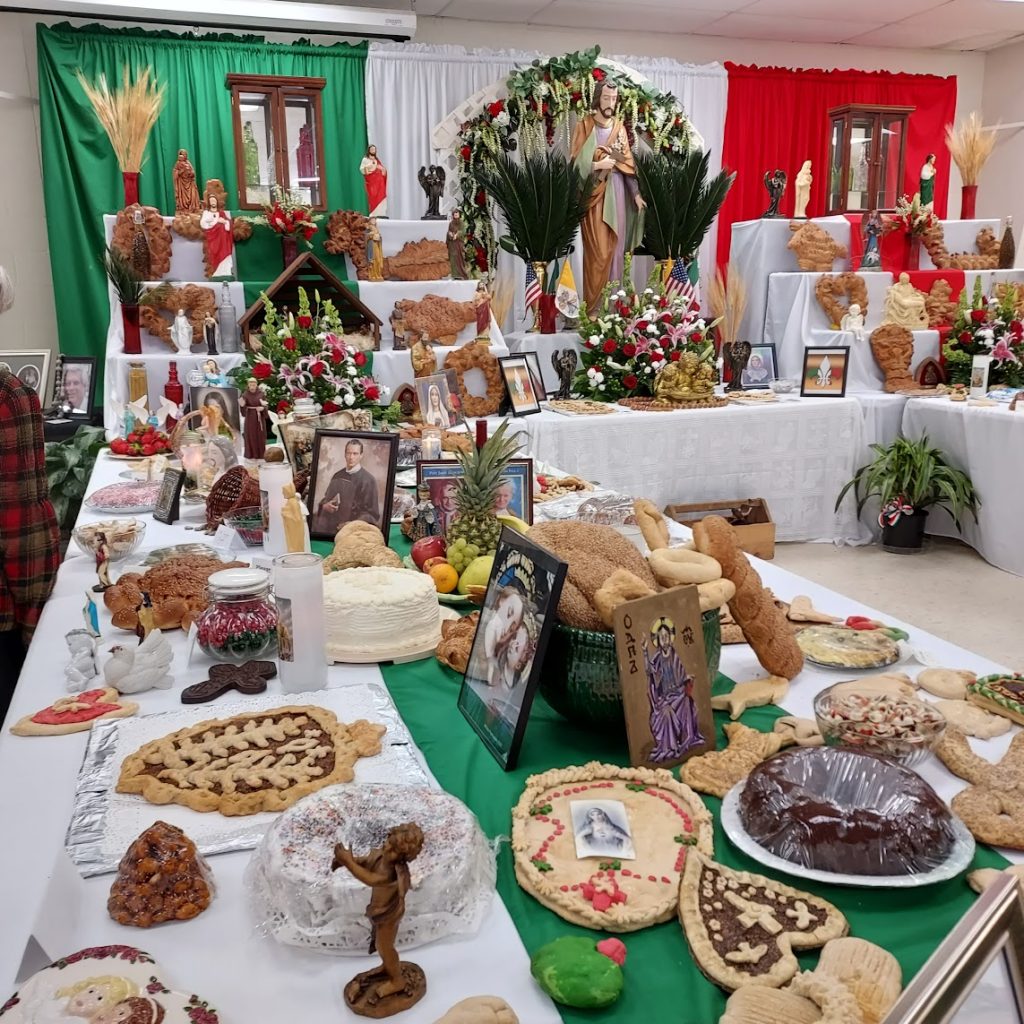
These are truly works of art and amazing demonstrations of culture. Best of all, one need not be Catholic or Sicilian to enjoy them. Take a look at a local newspaper article the week before the holiday to see who will have publicly viewable altars this year.
Most Saint Joseph’s Day altars have three components to them. One is the statue of Saint Joseph. Another is the decorations, similar to what one would find in Sicily: flowers, candles, figurines, medals, and other items make the altar. And finally—an easy favorite for many—there’s food.
Oh, the food! Just like Sicily, there are cookies, cakes, and bread. Many of these are often baked in religiously symbolic shapes such as shellfish, lambs, crosses, hearts, hammers, doves, and more. There are, of course, fava beans, which remind Sicilians of the divine breaking of the drought-induced famine. And there are lemons, which are also thought to bring good fortune (especially, it is said, for single women looking to find a husband).
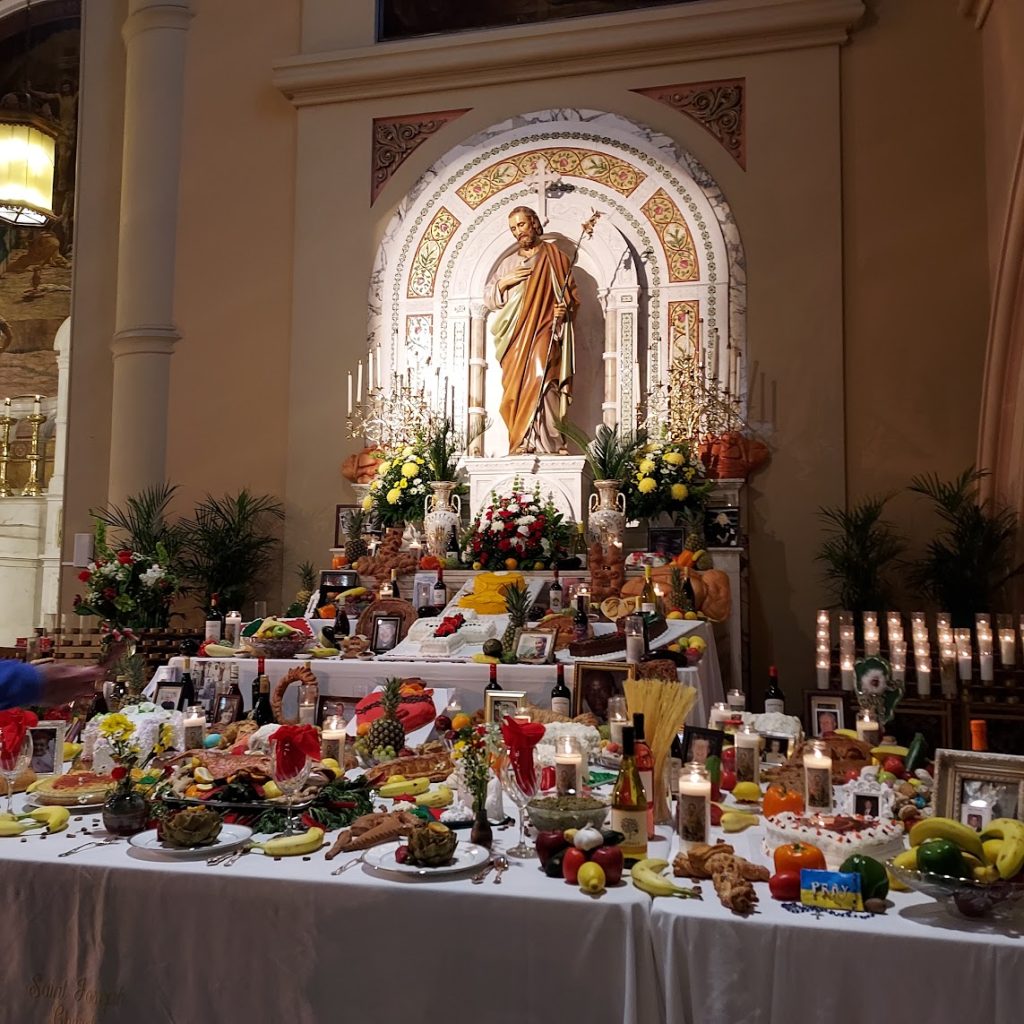
Usually food is free of charge or available for purchase. Sometimes you’ll be gifted a goody bag to take with you. And, in line with the Italian tradition of providing for the needy, leftovers are often donated to the poor.
Of course, if you’ve been here for Saint Joseph’s Day, you know that the altars aren’t the only way people celebrate the holiday in New Orleans. No fewer than four parades are held on the weekends surrounding March 19 by various local Italian-American societies.
And, in true only-in-the-Crescent-City fashion, there is also Saint Joseph’s Night, centered around the city’s Black communities. After the sun goes down, Mardi Gras Indians in full, colorful, self-made suits sing and dance through the neighborhood, delighting onlookers and searching for rival groups of Indians.
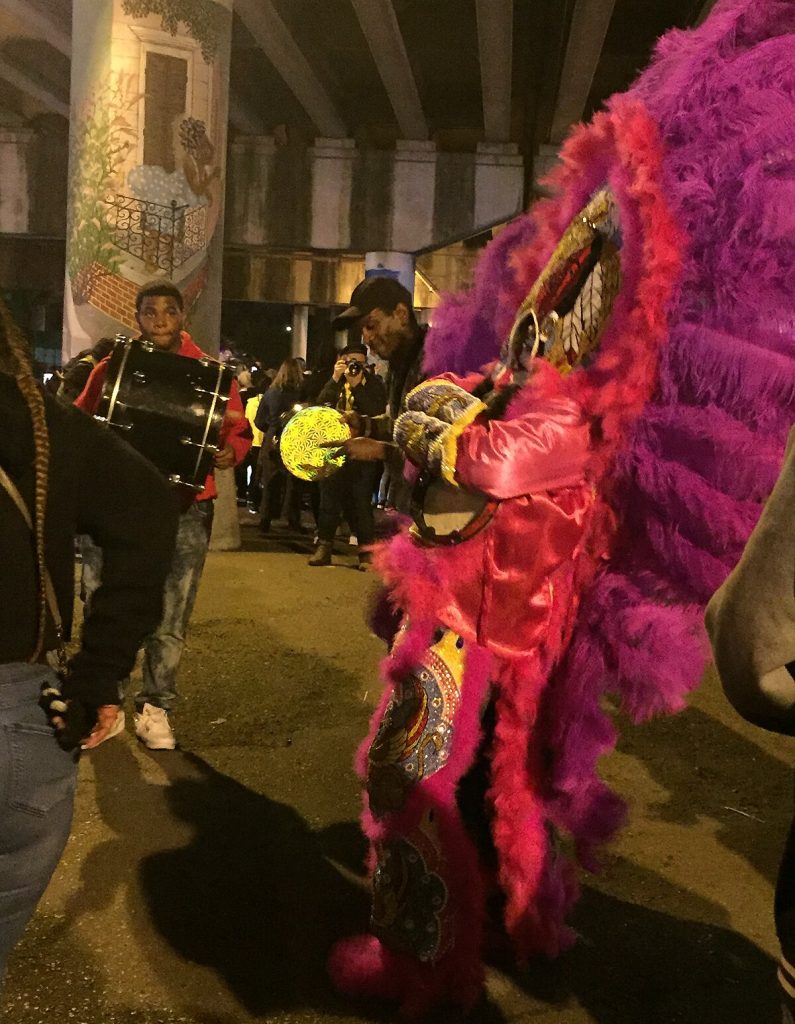
It’s not clear that this Mardi Gras Indian-focused tradition shares anything with the Sicilian traditions other than a date on the calendar, but both are amazing to witness.
No matter how you choose to celebrate your Saint Joseph’s Day (or Night), we at Gambino’s Bakery feel fortunate to be part of a region that is so cultured and vibrant.